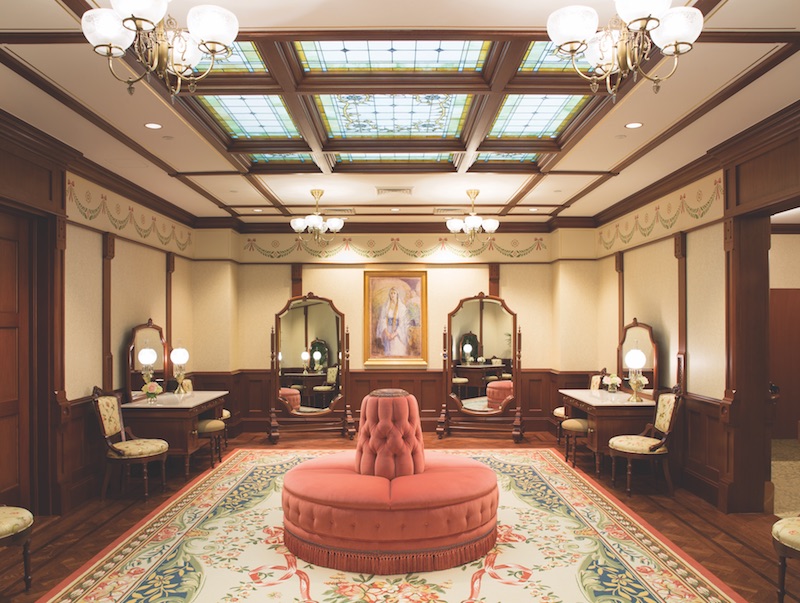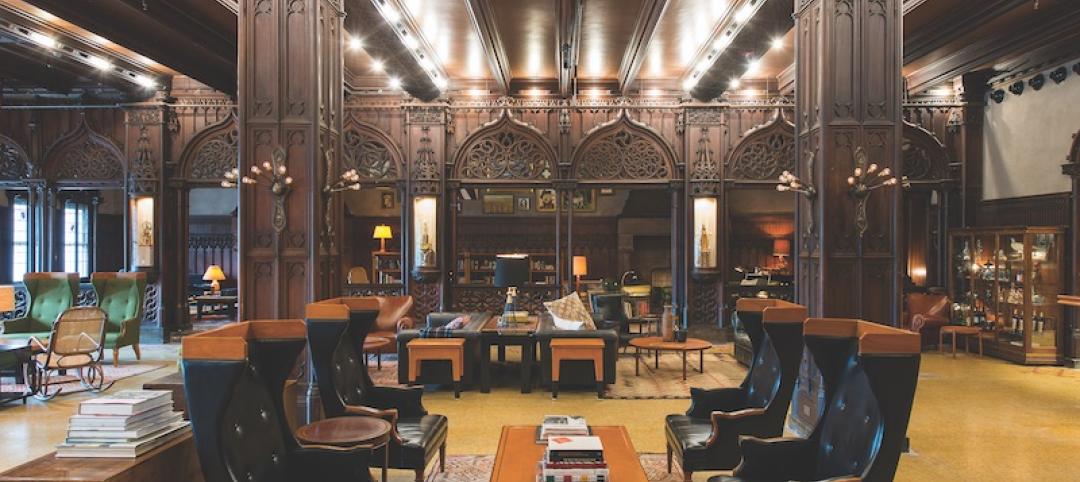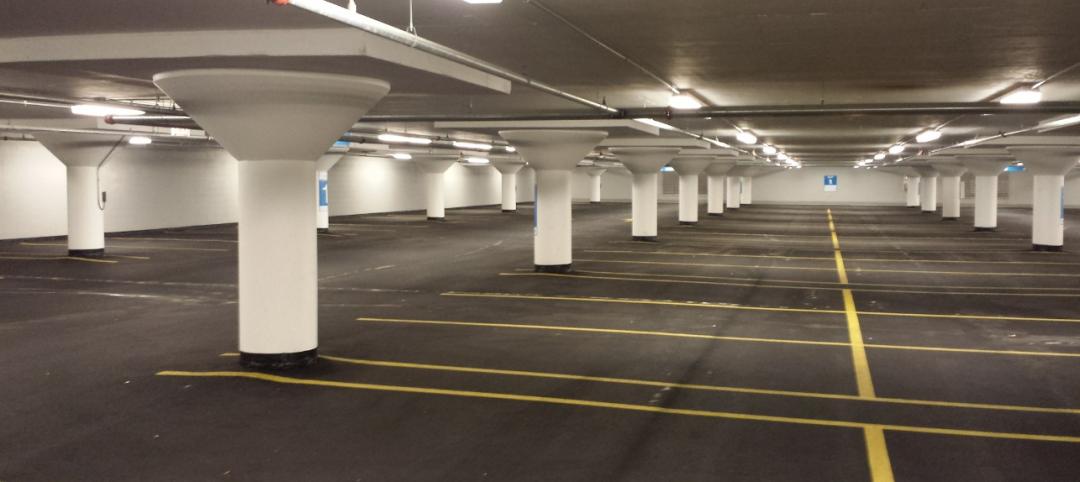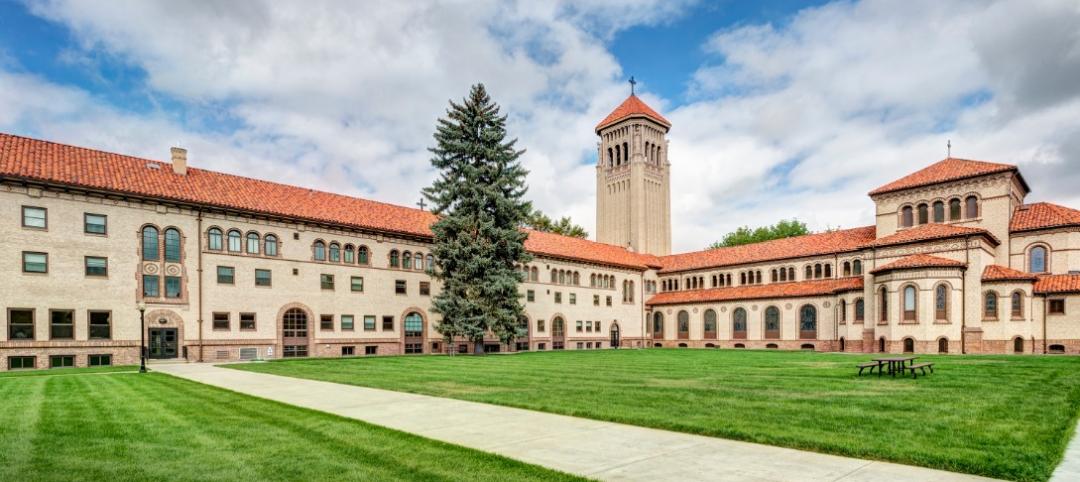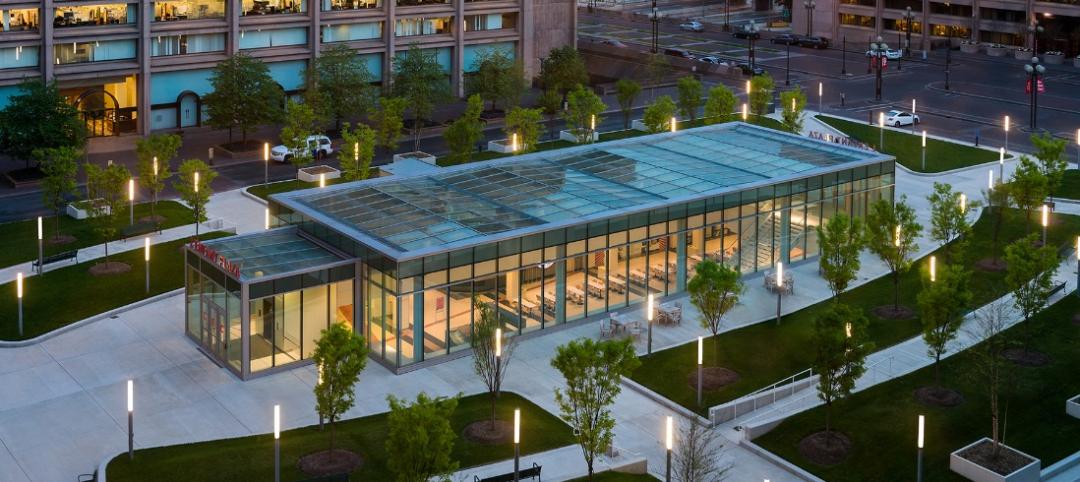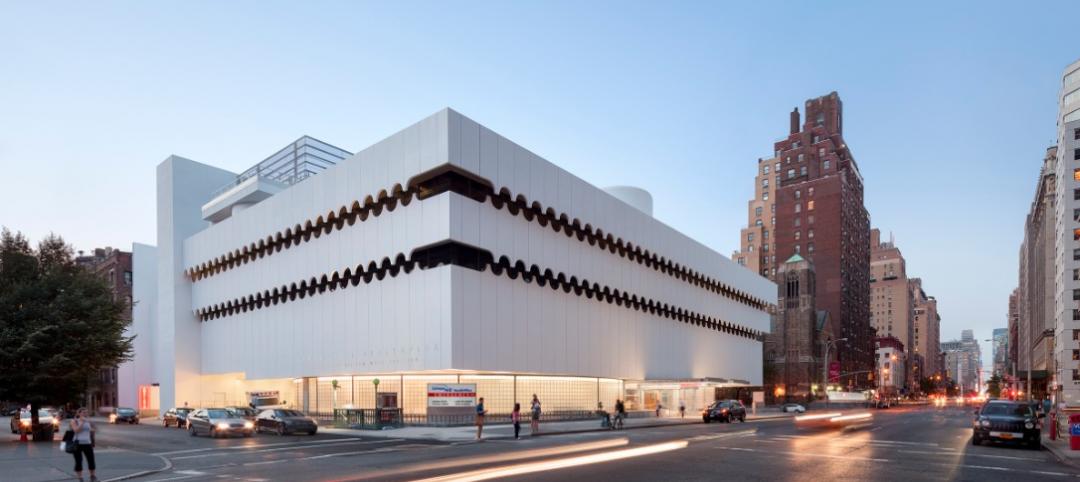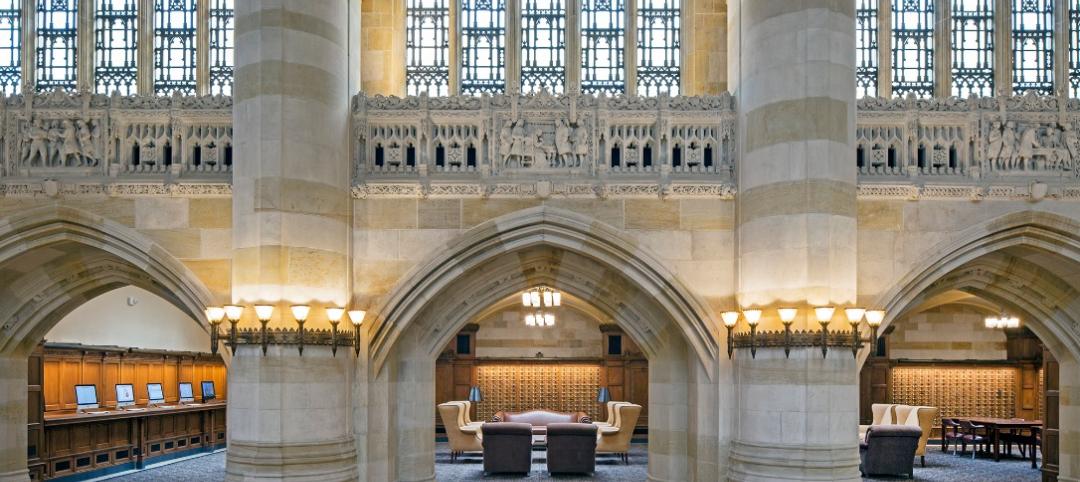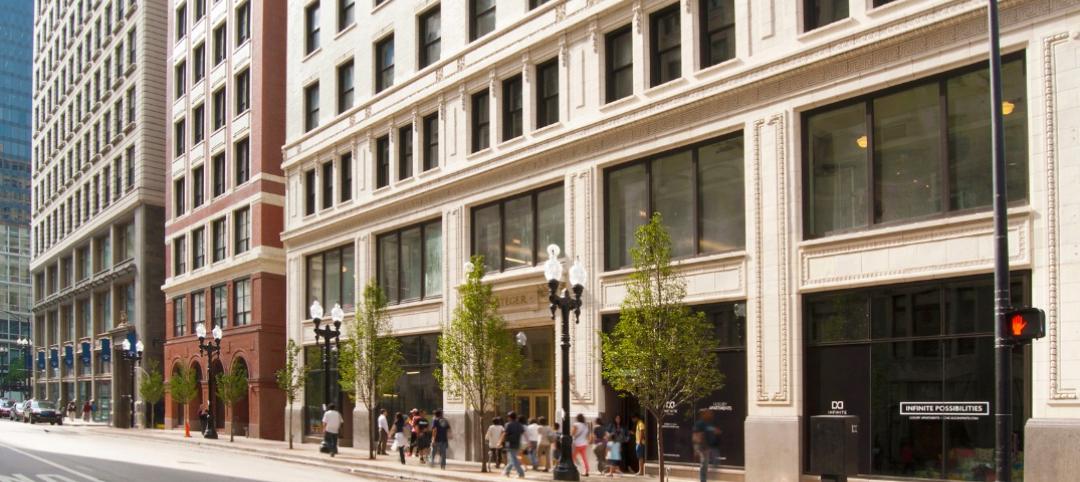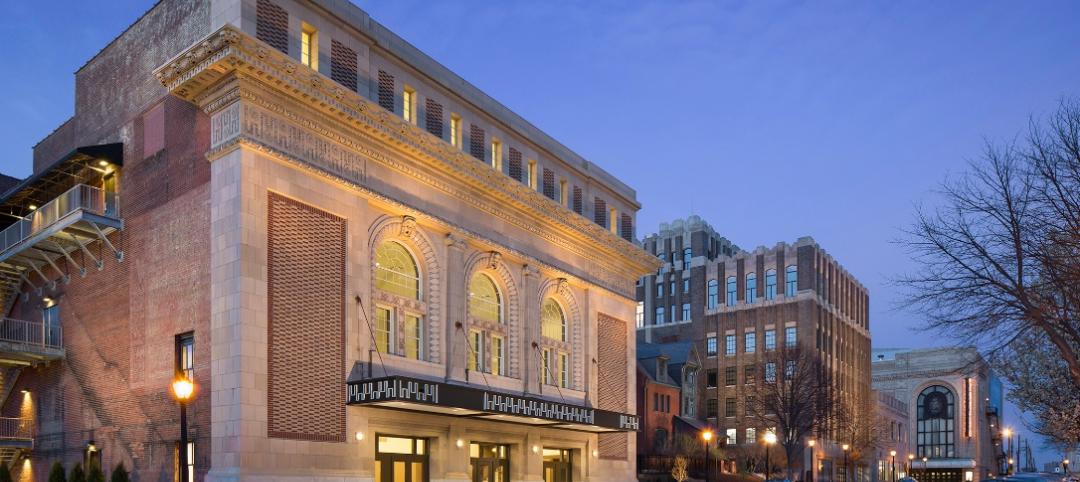December 17, 2010. That was the day a 300-watt light fixture carelessly placed on a wooden speaker box caused a fire that burned down the 35,000-sf Utah Stake Tabernacle in Provo, which the LDS Church had dedicated in 1898.
Parts of the tabernacle’s exterior shell were the only things that survived the blaze. A few months later, Thomas Monson, the LDS Church’s President, announced at the Mormon Church’s annual General Conference that the tabernacle walls would be preserved and the building rebuilt as a temple. This was completed in late 2015 and dedicated on March 20, 2016, the 115th anniversary of the death of William H. Folsom, the tabernacle’s original designer.
Unlike a tabernacle, which along with weekly church services can be used to host civic events like lectures and concerts, temples are holy places that are closed to all but devout members of the Church. Temples typically house small rooms used primarily for the faith’s essential rituals, such as baptisms and marriages.
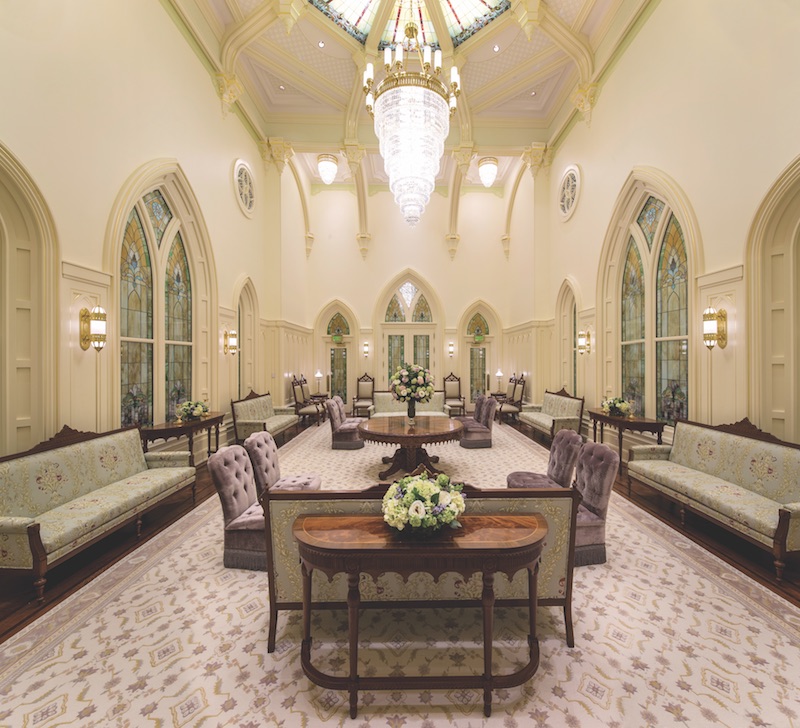 In the LDS faith the Celestial Room signifies the union between God and the family. It is viewed as the most glorious room in the temple. The art glass, furnishings, carpets, and light fixtures pay homage to the time when the original tabernacle was built.
In the LDS faith the Celestial Room signifies the union between God and the family. It is viewed as the most glorious room in the temple. The art glass, furnishings, carpets, and light fixtures pay homage to the time when the original tabernacle was built.
The reconstruction of Provo City Center Temple, as the building is now called, broke ground on May 12, 2012. The project expanded Provo Tabernacle’s size to 93,000 sf, primarily by creating two below-grade floors that include underground parking. The excavation went 40 feet down and required extensive shoring and water removal. The Building Team stabilized the 6.8-million-pound exterior walls in order to place the structure onto a network of 146 steel pipes, nine inches in diameter and 90 feet long.
Smaller micropiles also held up the main structure. This was the first time in Utah, and only the third time in the world, that construction crews used steel shoring and needle beams to support a complete building.
During reconstruction, what remained of the tabernacle was fortified with up to 10 inches of reinforced concrete. The project team removed two interior wythes of historic brick and secured three others with steel helical ties. Shotcrete was applied to two layers of rebar that were erected around the interior perimeter. The shotcrete walls function as reinforced shear walls to resist lateral earthquake and wind loads.
Because interior space was at a premium, the Building Team needed to apply the shotcrete as thin as possible.

More than 20,000 bricks, including original brick from the 1880s building that the crew salvaged and restored, were used. Crews also drew from other local stockpiles of brick that either came from the same era, or looked close enough to produce a consistent exterior.
Although the reconstruction expanded the building footprint, it also maintained aspects of the tabernacle’s floor plan. For example, vertical circulation still occurs at the corner stair towers.
Considerable attention was paid to historical accuracy. Perhaps the temple’s most glorious space is its Celestial Room, whose art glass, furnishings, carpets, and light fixtures combine to pay homage to the period when the original tabernacle was constructed.
The interior lower and main levels favor design details from the 19th-century Eastlake architectural movement, whereas and the upper levels feature Higher Gothic Revival design.
The above-ground levels include a chapel, instruction rooms, offices, lobbies, and five rooms where marriages are performed.
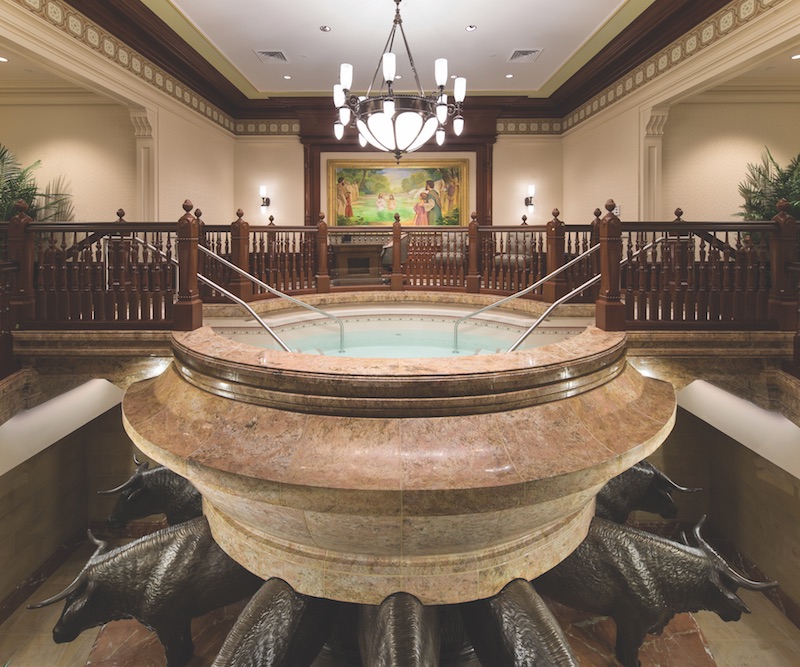 The baptismal font rests on the backs of 12 oxen. The symbol of the oxen holds special meaning in the LDS Church.
The baptismal font rests on the backs of 12 oxen. The symbol of the oxen holds special meaning in the LDS Church.
The temple’s custom-made walnut and mahogany millwork and trim were based on the tabernacle’s original faux-painted wood trim. The temple’s art glass windows follow the design and colors of the tabernacle’s windows, which were installed around 1917. Paint colors reflect common colors used in the tabernacle as well as popular colors from 1880s Utah.
The reconstruction restored the roofs of the tabernacle’s four corner towers, which had collapsed during the fire, and rebuilt a historic center tower, which had been removed in 1915. Natural light streaming through windows around the tower illuminate an art glass ceiling in the temple’s upper main lobby.
Upon completion of the temple, Provo became the LDS Church’s second city with two temples. (South Jordan, Utah, is the other.) The Provo City Center Temple has alleviated some of the overcrowding at the Provo Utah Temple, one of LDS Church’s busiest. The reconstruction of Provo City Center Temple has also been a boon to nearby restaurants and businesses that are benefiting from the foot traffic the temple has generated.
Among the temple’s many accolades: the 2017 Utah Heritage Award and the 2016 IIDA BEST Award.
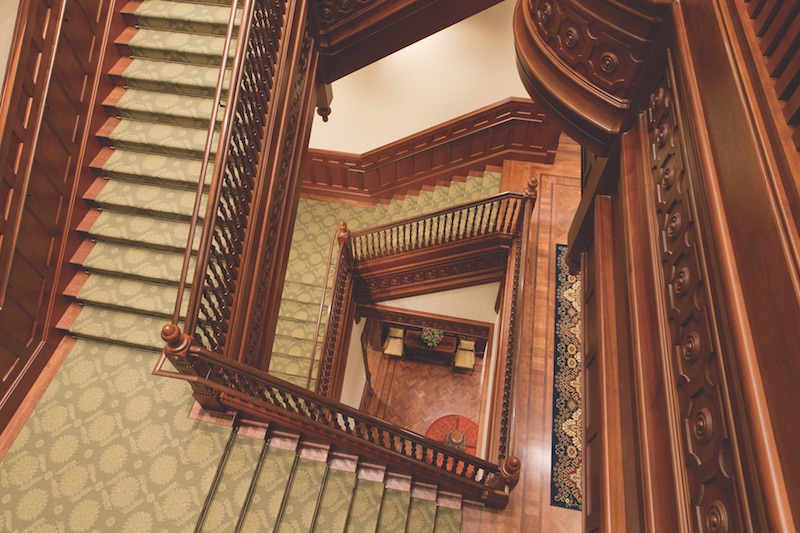 The use of carved wood, primarily custom-made walnut and mahogany millwork and trim, is prevalent throughout the temple.
The use of carved wood, primarily custom-made walnut and mahogany millwork and trim, is prevalent throughout the temple.
Project Summary
Platinum Award Winner
Building Team: FFKR Architects (submitting firm, architect) The Church of Jesus Christ of Latter-day Saints (owner) Reaveley Engineers + Associates (S/PE), Van Boerum & Frank Associates (ME) Envision Engineering (EE) Jacobsen Construction (GC/CM).
Details: 93,000 sf. Construction cost: Confidential. Construction time: March 2012 to November 2015. Delivery method: CM/GC.
See all of the 2017 Reconstruction Award winners here
Related Stories
Reconstruction Awards | Nov 11, 2016
Exclusive Chicago club re-emerges as a boutique hotel
Built in 1893 for the World’s Columbian Exposition, the CAA was an exclusive social club founded by leading figures in American sports and commerce.
Reconstruction Awards | Dec 1, 2015
Massive Chicago parking garage gets overdue waterproofing
Millennium Lakeside Garage, the largest underground parking facility in the U.S., hadn’t been waterproofed since the 1970s. The massive project took nearly 2½ years and 33,554 man-hours.
Reconstruction Awards | Nov 30, 2015
Washington Monument restored after 2011 East Coast earthquake
This restoration and repair project, which was completed under budget and eight days early (despite several setbacks), involved re-pointing 2.5 miles of mortar joints, repairing 1,200 linear feet of cracks, and installing 150 sf of Dutchman repairs. Construction took place from November 2011 to May 2014.
Reconstruction Awards | Nov 30, 2015
Denver's 107-year-old seminary campus modernized
The scope of the project included the seminary dorms, library, and chapel, all of which posed their own set of obstacles.
Reconstruction Awards | Nov 24, 2015
Center of I.M. Pei-designed plaza part of Washington redevelopment
The L’Enfant Plaza, a three-story below-grade mall, was renovated to include a new glass atrium pavilion and a 40-foot-long, interactive LED.
Reconstruction Awards | Nov 24, 2015
Manhattan's first freestanding emergency department a result of adaptive reuse
The Lenox Hill Healthplex, a restoration of the Curran O’Toole Building, has glass-block walls and a carefully preserved exterior.
Reconstruction Awards | Nov 19, 2015
Nave restored at Yale’s Sterling Memorial Library
Turner Construction and Helpern Architects revived the 150-foot-long nave, which was embellished with stained glass windows by G. Owen Bonawit, stone carvings by René P. Chambellan, and decorative ironwork by Samuel Yellin.
Reconstruction Awards | Nov 19, 2015
Infinite Chicago redevelopment bridges past to present
The renovation of three historic downtown buildings—the Gibbons and Steger Buildings and Pickwick Stables—includes a multi-level concrete walkway connection.
Reconstruction Awards | Nov 18, 2015
Sun Theater serves the youth of St. Louis
Lawrence Group and property owner TLG Beaux Arts raised $11 million to restore the 26,000-sf theater into a modern performance venue.
Reconstruction Awards | Nov 17, 2015
Smithsonian Institution’s Arts and Industries Building again an exposition and museum space
After removing decades’ worth of unfortunate additions to expose 17 historic interior spaces for the National Historic Landmark, the Building Team zoned in on the client’s key concern.


